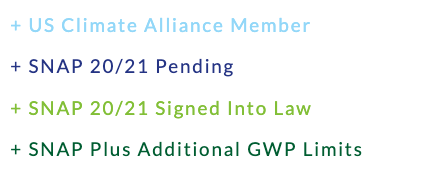Building Your Policy Toolbox
New NASRC Resources
2022 marks the start of new HFC regulatory requirements at the state and federals levels. We're pleased to announce TWO new resources to help our members and partners stay up-to-date of on the latest policy information:
HFC Policies & Refrigerant Regulations by State
Amidst increasing regulatory pressures at the state and federal levels, we know it can be difficult to stay on top of new and changing regulations. This new tool tracks state and federal regulatory activities, and includes:
Interactive map of regulatory status by state
Summary of regulatory details by state
Overview of federal refrigerant regulations
Printable PDF summary
Alternative Refrigerants for Commercial Refrigeration
As the first step of the U.S. HFC phase-down takes effect, the supermarket industry is seeking clarity on alternative refrigerant options and their current approval status. This tool provides a high-level summary of current and future refrigerant options for U.S. commercial refrigeration applications, including:
Stationary Refrigeration Remote Systems
Remote Condensing Units
Self-Contained Refrigerated Cases
This release is kicking off a larger educational resource initiative we recently launched. Stay tuned for more new resource and contact us with questions.









